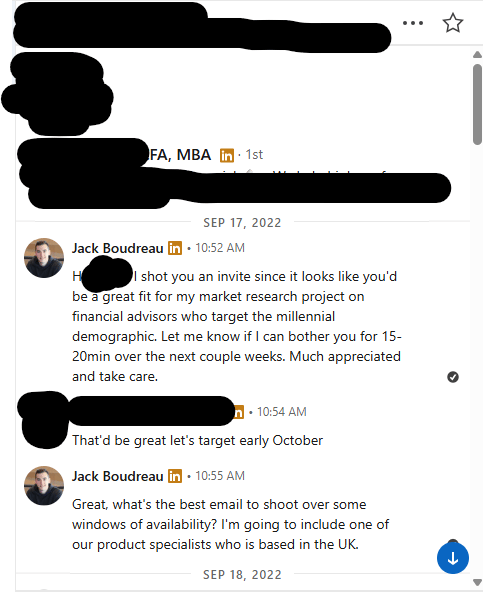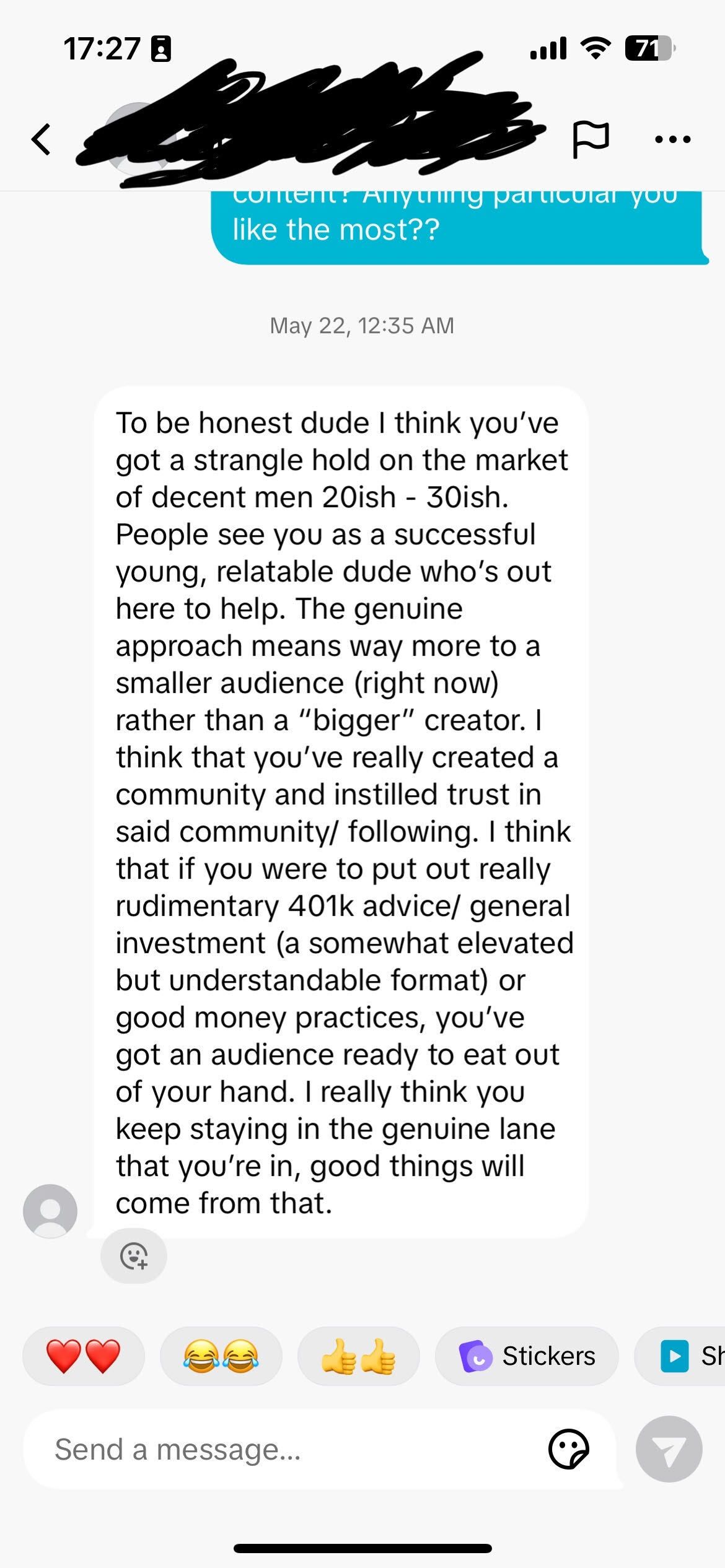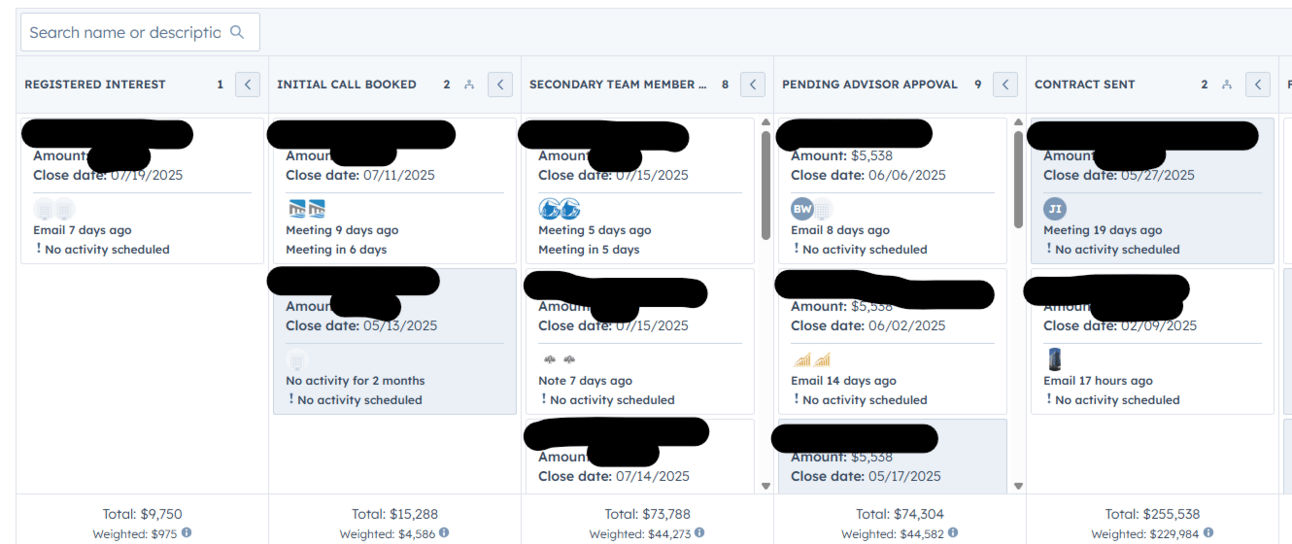Shameful plug!
Here. We. Go.
This week it was announced that we’re presenting Habits at Morningstar’s Global Investment Conference next month!
This is a full-circle moment for me, and I’d love your help spreading the word.
If this journey’s ever inspired you, cracked a smile, or helped you take one step closer to financial peace—a like, comment, or share on this LinkedIn post would mean the world. Let’s show the world what we’re building together.
Thank you ❤️
– JB
Main Story:
Cold Outreach → Audience Building
Consider this post to be the first of many. One that is sort of an extension of that 0-1 series I launched at the start of this year.
So if that was a 100 level course, consider this the start of the Startup 201 course. Now that we have an audience, a steady foundation, and better systems, how we maintain our authenticity and engagement, but at scale.
Let’s break it down.
Part 1: Getting Started with Cold Outreach
Like most things, we started stupidly simple.

I tried to do (at least) 5 DM’s each day back in 2022
I was DMing financial advisors on LinkedIn, one by one, introducing Habits and seeing who would bite. No tools. No trackers. No strategy beyond: "Can I get this person to respond?"
From there, I doubled down on engaging with LinkedIn content not just posting, but genuinely replying to people, supporting their stuff, and showing up consistently. Not pitchy. Just real.
And I’ll say this now because most people skip it: you need an audience before you need automation.
Build your audience. Then build the machine.
Part 2: What We Call "Audience"
When I say "audience," here’s what I mean:

These are the DMs that emphasize your minimal viable brand
Social media followers
DM replies, email exchanges, ZOOM invites, etc.
Advisors and consumers in our ecosystem
Blog subscribers
Anyone with a name or email who’s ever touched us
There is this new term circulating around the startup community. It’s called minimal viable brand. Very similar to the notable term of MVP (minimal viable product), it’s the same concept but with a potential user base. Because you shouldn’t be investing in outbound. You don’t need funnels. You need believers.
Organic first. Then build.
Part 3: The System Behind the Scenes
Once we had momentum, we started laying in the infrastructure.

I’ve made nearly 20 templates now that things are consistent
We use:
Zapier to connect all of the following
Beehiiv to manage the newsletter
HubSpot for CRM & data gathering
Linktree to manage content & access to exclusive offerings
Confluence & Jira to manage bug fixes, product sprints, roadmap, etc.
Ellipsend for Instagram automations & workflows
Rootnote to aggregate social media tracking
Notion for content mapping and strategizing
(And I’m purposely leaving off a few since the world is a competitive space and nearly every single one of our competitors subscribes to this blog)
Yes, I hate saying everything is a funnel—but let’s be honest. It is.
The real question is: how do you segment people into the right part of it?
Part 4: Our Seven-Stage Lifecycle Funnel
We created seven lifecycle stages to reflect where each user is in their journey:
Identified – We found them. They don’t know us yet.
Aware (MQL) – They’ve seen us. Maybe followed us or visited our site.
Interested (SQL) – They’ve downloaded the app or booked a call.
Evaluating (SQL) – They’ve been connected with advisors and are thinking it over.
Customer – They hired one of our advisors.
Former Customer – They left. Churned. Went elsewhere for help.
Evangelist – They tell people about us.
Every stage has its own goal, message, and automation attached. Some of it’s fully built. Some of it’s manual. But we’re always trying our best.
Authenticity will always win. But finding balance with scale is a lot easier said than done.
Part 5: Drip Campaigns That Don’t Suck
Once someone downloads our app or books a call but doesn’t move forward, we trigger a custom drip sequence.
I am truly against automation, it feels weird and unauthentic, but it’s been clear in the last few months that it undoubetly makes the user experience better.
So congrats universe, you win…
Here’s a new one I’m working on for families & individuals:
Day 0 – Welcome Email (From me) Subject: "You’re in. Let’s make this easy." Quick intro. Reassurance. A little credibility. A call to action.
Day 1 – Check-In Subject: "Want help or just browsing?" Soft nudge. Give them an out. Invite a reply.
Day 3 – Why Habits is Different Subject: "Skip the awkward money convos." Hit them with the core differentiator and a spicy stat.
Day 7 – Value Add Send a helpful resource or blog post. Build trust. Remind them we’re here.
Day 10 – Overcoming Objections Address the typical stuff. "I’m not ready," "Is this legit?" etc.
Day 14 – Personalized Offer Invite-only community, referral perks, exclusive content—just enough FOMO.
Day 21 – Last Chance Reminder Final nudge. Make it feel like the last call at the bar.
After that, they go to this blog or our monthly internal newsletter, that’s only available to those within our community.
Idk how effective these things will be until months after the fact. So I’m a big believer in take action, figure it out, iterate and try again. This isn’t rocket science.
Part 6: Selling Into Two Businesses

what we’re working on to close by EOQ
Here’s the crazy part: we’re not just selling to one audience. We’re selling to two.
Consumers who want a financial advisor
Advisors who want clients
And we have to get both on board at the same time.
That means:
Everything we build needs dual messaging
Every piece of content needs to resonate on both sides
Our pipeline is always being measured by how well we matchmake
It’s hard. But it’s also the moat. Anyone can copy the tech. But no one can copy your matchmaking engine, your trust, or your vibe.
Find your moat.
Part 7: GTM Is Just Controlled Chaos (and That’s the Point)
If there’s one thing I’ve learned building this company, it’s that GTM is absolutely unhinged.
It’s part art, part ops, part vibes…and it never stops evolving.
That’s why I’ve become obsessed with the idea of “GTM engineering.” Someone who:
Builds brand and drives performance
Writes copy and runs automations
Uses AI or creates workflows, but sounds human
Sends 100 emails at scale, but each one feels personal
Because at the end of the day, everything we build boils down to one question:
“Are we reaching this person in a way that feels real?”
You can’t answer that unless you know:
Where they’re coming from
Where they are in the journey
What they need to hear to move forward
And whether the whole damn thing is even working
That’s the job now. That’s the actual job.
Because our competitors? They can clone our style by dinner. But they can’t out-authentic us. And they sure as hell can’t out-experiment us.
So my mindset is simple…build the system. Build the segments. Build the drips.
But never forget: it all starts with someone out there wondering, “Is this for me?”
And your job is to make sure the answer feels like a hell yes.
Feedback for Jack
Did you like this email?
Enjoyed this newsletter? Forward it to a friend and have them signup. Alternatively, use the referral link at the bottom of this email.
What’s Coming Next?
hmm….I mean we could get really personal and talk about imposter syndrome, the rollercoaster nature of this type of work, but I’m also compelled to share other things. So feel free to reply to this and lemme know your thoughts!
Sharing Is Caring
Do me a favor, if you enjoy this, share it with a friend!
